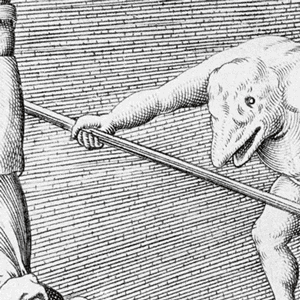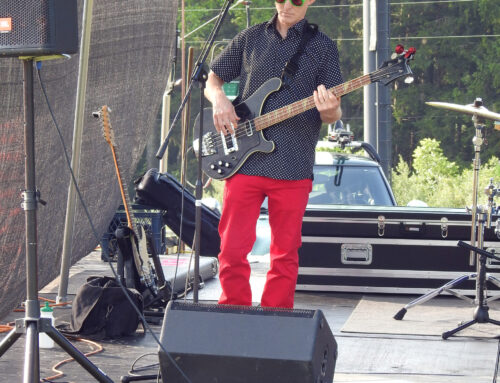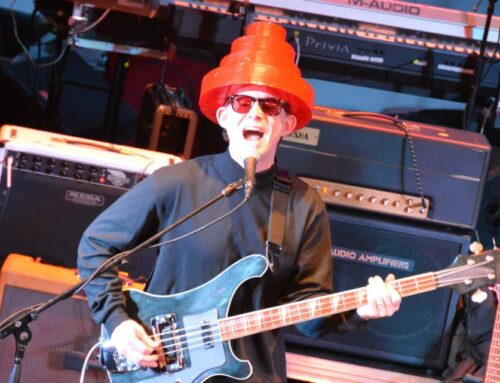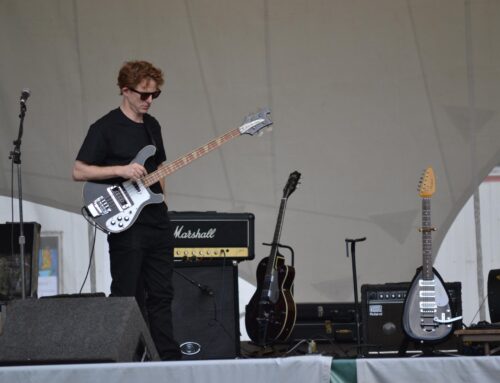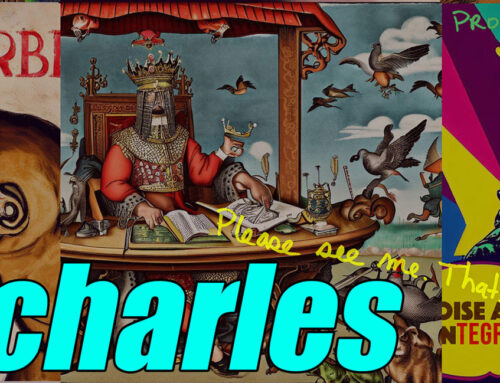Now the truth can be told: Jeff Edmunds shares more inside info about the creative dilemmas faced by members of The Long Afternoon as they prepare for their first full show in several years…
Two days from now, when I take the stage to play bass for The Long Afternoon at Tussey Mountain, the most fraught decision facing me is: what to wear.
As a much younger performer, I prided myself on my haberdashery. For me, a gig connotes “performance,” ergo a spectacle, ergo an outfit that borders on costume. As Miles Davis reputedly said, “Me, I like to wear shit that shines.”
In The SEEN, we were known for our stage attire, most notably the arrow suits debuted in 1983 and worn for only a few shows. As an older performer, I have come to realize that the outfit is what psychologists term “compensation”: something intended, usually unconsciously, to make up for something else perceived to be lacking or absent. In my case, talent.
In my youth, a stage uniform of sneakers, cargo shorts, and a T-shirt (no matter how “cool” the image on that T-shirt was purported to be) was unthinkable. These days, when I perform with older gentlemen whose talent requires no compensating stage attire, there is no dearth of any of these articles of clothing. Ugh.
The choice comes down to looking dope, or fly, or rad (insert your antiquated slang of choice) and sweating profusely, or looking pedestrian bordering on lame and feeling, at least temperature-wise, relatively comfortable. If Hamlet were a hipster: “To look cool or to feel cool, that is the question.”
There are additional concerns of course: clothing that is too tight can impede a musician’s ability to play their instrument, and clothing that is too loose can interfere with instrument cables, guitar straps, or drum stands. Baggy shirt cuffs can bang into strings or brush against pickups. Baggy pants, while comfortable, can be tripping hazards. Flea and Iggy have partially solved the problem by dispensing with shirts entirely.
Tight pants can create unsightly smartphone, wallet, or car fob bulges, distracting from the only bulges that matter in rock ‘n’ roll.
Shoes are especially challenging. On many stages, which are raised well above the level of the dance floor or auditorium, footwear is largely invisible to the audience except for the first few rows, which would imply that one should opt for comfort over fashion. On the other hand, the wrong shoes can spoil the dopest, flyest, or raddest ensemble, if not for hypothetical audients, then at least for the wearer, who will feel self-conscious and idiotic, like wearing Birkenstocks with a tux. One must feel good to look good and to play well. Or so it seems to me.
The venue must be factored in. Tussey Mountain is an outdoor gig, so weather must be considered: will it be hot and humid? Cool and windy? If I’m standing in direct sunlight, should I opt for sunglasses? If so, what kind? Or should I abandon any nod to cool and don a golf visor?
Right now, approximately 48 hours prior to the gig, I have no idea what the weather will be like, nor am I sure of the position of the sun (nor if sun there will be) relative to the location and orientation of the stage.
So I’m thinking black skinny jeans (because I can still wear them without looking ridiculous to my wife, the only person whose opinion matters), black Chuck Taylors (because they’re cheap and comfortable), and a black T-shirt with a yellow smiley face on it. (Not an emoji, but the old-school smiley face that started it all.)
Will I spike my hair? No idea. Who cares?
Prior to leaving for the performance, I will check myself in a full-length mirror, turn to the left, turn to the right, try to examine myself from behind, preen a bit and smooth any wrinkles in my clothes, and tell myself one of the many lies I increasingly tell myself with age:
“You look good.”
